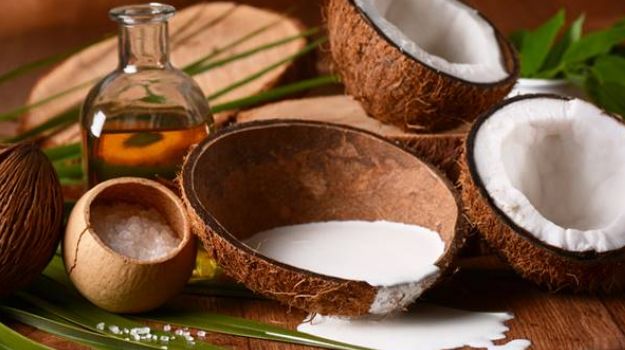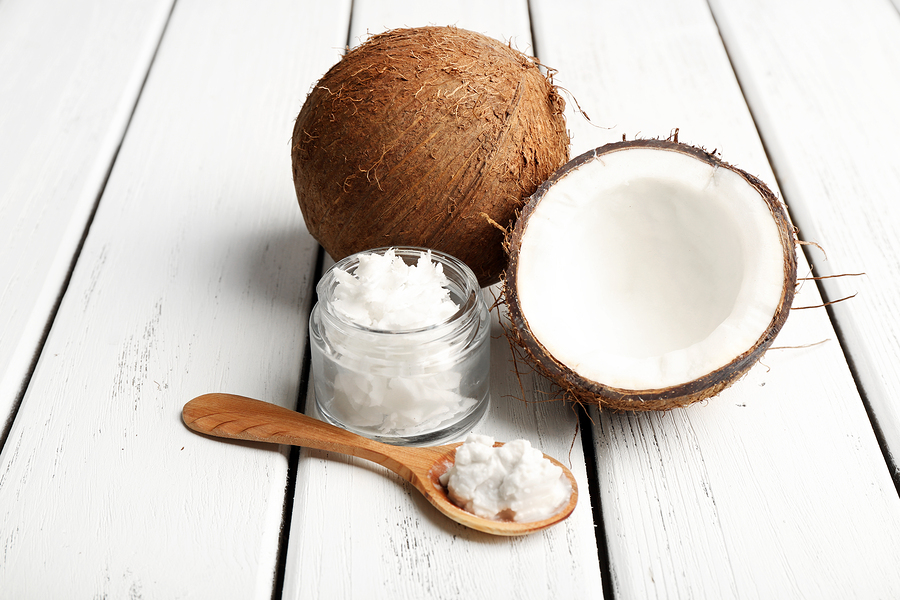Could Coconut Oil Help Reduce Antibiotics?
.jpg)
The World Health Organization (WHO) called on farmers and the food industry to stop the use of antibiotics for growth promotion and disease prevention in healthy animals
Reducing antibiotic use in food-producing animals reduced antibiotic-resistant bacteria in the animals by up to 39 percent
Medium-chain triglycerides (MCTs) found in coconut oil can help protect pigs from porcine epidemic diarrhea virus, which killed about 8 million pigs in 2014
MCTs added to pig feed results in increased average daily weight gain, feed intake and feed efficiency, making them a viable alternative to antibiotics for food producers
It’s no secret that antibiotic resistance has become one of the greatest health threats of the 21st century. As the World Health Organization (WHO) notes, antibiotic resistance is present in every country.1
The Review on Antimicrobial Resistance (AMR), which was commissioned in July 2014 by the U.K. prime minister and produced its final report in 2016, further explained that without action to curb the growing rates of antimicrobial resistance worldwide, we’re headed for an era where antibiotics stop working and “we’re cast back into the Dark Ages of medicine.”2

It’s possible that nature may ultimately come to the rescue, courtesy of naturally antibacterial substances like coconut oil, but in the meantime the situation is becoming dire, WHO notes, such that, “Some types of bacteria that cause serious infections in humans have already developed resistance to most or all of the available treatments, and there are very few promising options in the research pipeline.”3
It’s also no secret that industrial animal agriculture, i.e., confined animal feeding operations (CAFOs), are a major reason why we’re in this predicament.
Eighty percent of the antibiotics used in the U.S. are used by industrial agriculture for purposes of growth promotion4 and preventing diseases that would otherwise make their CAFOs unviable. Low doses of antibiotics are added to feed as a matter of course, not only to stave off inevitable infectious diseases but also because they cause the animals to grow faster on less food. The U.S. Food and Drug Administration (FDA) issued guidance on agricultural antibiotics in 2013, but it didn't go anywhere near far enough.
They asked drug companies to remove indications for "feed efficiency" and "weight gain" from the labels of their antibiotic products and required veterinarians to oversee any addition of these drugs to animal feed and water. Most companies have agreed to comply with these voluntary guidelines and state they no longer use antibiotics for growth promotion purposes. Instead, they simply state they use the antibiotics for disease prevention and control, a use that is still allowed under the FDA's guidance.
.jpg)
WHO Steps Up, Calls for End to Antibiotics Usage in Healthy Animals
Going where the FDA did not, in November 2017 WHO called on farmers and the food industry to stop the use of antibiotics for growth promotion and disease prevention in healthy animals. In a breath of fresh air, WHO explained, “The new … recommendations aim to help preserve the effectiveness of antibiotics that are important for human medicine by reducing their unnecessary use in animals.”5
They cited a 2017 study published in The Lancet Planetary Health, which found reducing antibiotic use in food-producing animals reduced antibiotic-resistant bacteria in the animals by up to 39 percent, and may similarly reduce such bacteria in humans, particularly those who are directly exposed to food-producing animals.6
As it stands, the excessive use of antibiotics among CAFO animals has turned them into veritable “disease factories”7 and, in the U.S., when the FDA tests raw supermarket chicken, they routinely find antibiotic-resistant bacteria to be present.8
This isn’t only a problem in the U.S., of course, especially as other major meat producers, including those in China, Brazil and Russia, increasingly take up the antibiotic-reliant U.S. CAFO model of agriculture.9 According to WHO, use of all classes of medically important antibiotics should be reduced in food-producing animals, while their use for growth promotion and disease prevention without diagnosis should be completely restricted. They noted:
“Healthy animals should only receive antibiotics to prevent disease if it has been diagnosed in other animals in the same flock, herd, or fish population. Where possible, sick animals should be tested to determine the most effective and prudent antibiotic to treat their specific infection.
Antibiotics used in animals should be selected from those WHO has listed as being ‘least important’ to human health, and not from those classified as ‘highest priority critically important.’ These antibiotics are often the last line, or one of limited treatments, available to treat serious bacterial infections in humans.”10
Most of the CAFO industry has criticized WHO’s guidelines, and already the USDA seems to be siding with industry instead of public health.11 USDA acting chief scientist Chavonda Jacobs-Young said in a statement, “The WHO guidelines are not in alignment with U.S. policy and are not supported by sound science. The recommendations erroneously conflate disease prevention with growth promotion in animals."12
MCTs Important in Reducing Disease Transmission
The most obvious method of reducing disease transmission among food-producing animals is to convert the CAFO model to one that respects the laws of nature, raising them not in crowded, filthy feedlots and windowless buildings but instead on pasture and with access to their natural diets and the outdoors. But even among industrial producers, there are ways to prevent disease that don’t involve antibiotics.
It was previously found, for instance, that medium chain fatty acids (MCFAs), also called medium-chain triglycerides or MCTs, can help protect pigs from porcine epidemic diarrhea virus, which killed about 8 million pigs in 2014.13 In a study presented at Kansas State University’s 50th Annual Swine Day, researchers further revealed that MCTs added to pig feed results in increased average daily weight gain, feed intake and feed efficiency.
Jason Woodworth, an associate professor in the department of animal sciences and industry, said in a news release, “It is … interesting to imagine the possibilities that MCFA may bring to the swine industry considering the momentum to reduce or eliminate feed grade antibiotics … MCFA could easily be one of the options that swine producers can use to improve performance in the absence of feed grade antibiotics.”14
.jpg)
The researchers are also testing MCTs against additional viruses, bacteria and other pathogens to determine which blends would be most effective in animal feed.
Further, since synthetic-grade fatty acids were used in the study, which are not available to pig producers, the High Plains/Midwest Journal reported, the researchers are attempting to develop MCTs that could be produced in large volumes and made easily attainable by food producers. It would be interesting to see how pure coconut oil would fare, as it’s nature’s richest source of MCFAs.
Coconut Oil Has Impressive Antimicrobial Properties
Coconut oil contains about 50 percent lauric acid (C12), which has more potent antiviral and antibacterial activity than other MCTs like caprylic acid (C8), capric acid (C10) and myristic acid (C14).
Your body converts lauric acid into monolaurin, a monoglyceride that has shown to be somewhat effective in combating antibiotic-resistant staphylococcus and streptococcus. It also has antifungal and antiviral effects against certain viruses such as HIV and herpes, influenza, measles, gram-negative bacteria and protozoa such as giardia lamblia.15
In the case of Clostridium difficile (C. difficile), the leading cause of hospital-acquired antibiotic-associated diarrhea, which is becoming increasing antibiotic-resistant, MCTs from coconut oil (especially lauric acid) were found to inhibit its growth.16 Writing in the Asian Pacific Journal of Tropical Medicine, researchers noted:
“The MCFAs and their derivatives … found in coconut are effective in destroying a wide assortment of lipid-coated bacteria by disintegrating their lipid membrane. For instance, they can be effective against bacteria that can lead to stomach ulcers, sinusitis, dental cavities, food poisoning, and urinary tract infections.”17
.jpg)
Monolaurin has been further shown to act against gram-positive and gram-negative bacteria such as streptococcus, staphylococcus aureaus (staph) and Enterobacter, and most of the bacteria did not show resistance to it.18 Monolaurin in combination with oregano oil was even found to work better than the antibiotic vancomycin in treating staph.19
Some Food Giants Have Slashed Antibiotics Usage in Favor of Natural Options
Even without the FDA or USDA forcing their hand, some big names in the food industry have made positive changes. Perdue announced in October 2016 that it had ended the routine use of antibiotics companywide, only using antibiotics when chickens get sick (in about 5 percent of their birds). They’re now marketing their poultry under a “no antibiotics ever” label.
Perdue has stopped using not only antibiotics used to treat humans, but also ionophores, which are not used in humans. Ionophores are a class of antibiotics used exclusively in animals and more commonly in ruminant animals such as cows. The use of the antibiotic in poultry farming is to control parasitic illnesses in CAFOs, where disease spreads quickly.
Perdue chairman Jim Perdue told NPR they’re eliminating antibiotics due to marketing reasons and consumer demand, noting, "Our consumers have already told us they want chicken raised without any antibiotics.”20 The company is even using natural herbs and vitamins to help the chickens stay healthy. They put oregano in the chicken’s water and thyme in their feed to supply antioxidants and boost immune function.21 This isn’t the case across the board, however.
Sanderson Farms, the third-largest poultry producer in the U.S., which process more than 10.6 million chickens every week, is the only large producer that has refused to commit to limiting antibiotics use.22 In February 2017, a Sanderson Farms shareholder proposal that requested the company phase out the use of medically important antibiotics even failed to pass.23
The company has stated that using antibiotics preventively in food animals is not dangerous to human health and continues to use two antibiotics — gentamicin and virginiamycin — that are important for treating human infections.24 As of November 2017, they still state on their website FAQs section, “After deliberate and careful consideration, we do not plan to withdraw antibiotics from our program at this time.”25
Help Fight Antibiotic Resistance by Carefully Choosing Where Your Food Comes From
Reducing the spread of antibiotic-resistant bacteria is a significant reason for making sure you're only eating grass fed, organically raised meats and animal products.
Besides growing and raising your own, which may not be an alternative for most people, buying your food from responsible, high-quality and sustainable sources is your best bet, and I strongly encourage you to support the small family farms in your area that have committed to raising animals without the irresponsible use of antibiotics for growth promotion and disease prevention.
As for coconut oil, MCTs are also helpful for ridding your gut of harmful microorganisms like pathogenic bacteria, viruses, fungi and parasites, and coconut oil is an excellent addition to your daily diet.
By Dr. Mercola
https://articles.mercola.com/sites/articles/archive/2017/11/28/could-coconut-oil-reduce-antibiotics.aspx
Thank You for Your time if You enjoyed please kindly Upvote and Follow me for more @havefunseemore :)